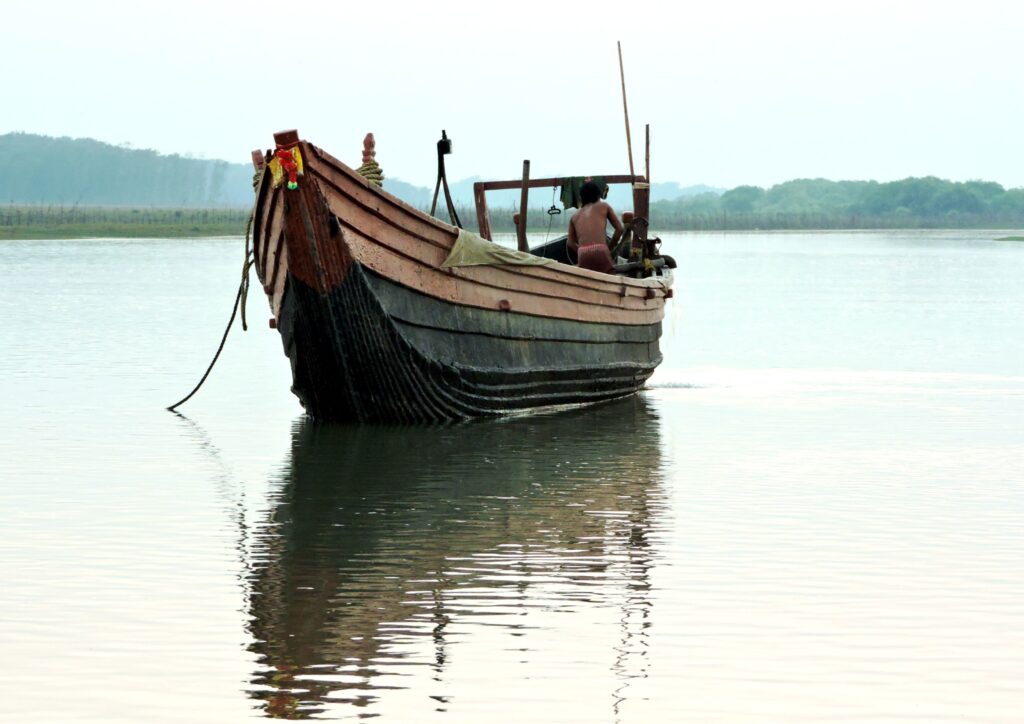Top 10 interesting facts about Sundarbans
The Sundarbans is a place of breathtaking beauty and unique wonder. Spanning the coastal region of India and Bangladesh, it is the world’s largest coastal mangrove forest. This sprawling delta is a testament to nature’s raw power and adaptability.
It is a land of thick jungles, winding rivers, and a fragile ecosystem. This ecosystem supports many types of life. From the iconic Royal Bengal Tiger to the shimmering glow of bioluminescent waters, the Sundarbans are a treasure trove of fascinating secrets waiting to be discovered.
Here are 10 of the most interesting facts you must know about the Sundarbans.
1. The World’s Largest Mangrove Forest

The Sundarbans is a massive forest, covering approximately 10,000 square kilometers. About 4,000 square kilometers of this area are in India, while the rest lies in Bangladesh. This makes it the largest continuous coastal mangrove forest in the world. Its vastness is hard to imagine; the Indian part alone is ten times bigger than the city of Venice. The forest is a labyrinth of tidal rivers, channels, and small islands. This complex network makes it a truly unique and intricate landscape.
The dense mangroves act as a natural barrier. They protect the coast from storms and cyclones. They also prevent soil erosion. This role is crucial for the safety and stability of the region. The forest’s immense size and vital protective function make it a global ecological hotspot.
2. Home to the Royal Bengal Tiger

The Sundarbans is the only place on Earth where the Royal Bengal Tiger has adapted to a swamp environment. These tigers are known for their exceptional swimming abilities. They are often seen in the brackish water channels. This unique adaptation allows them to hunt and survive in the delta’s watery landscape. The tigers here are also known to be more aggressive. This has led to the unfortunate “widow village” where tigers have attacked families.
Conservation efforts are a major focus in the Sundarbans. The region is a key tiger conservation area. It is estimated to have a population of about 400 Royal Bengal Tigers. Protecting these magnificent animals is a top priority. The tiger is not just a predator here; it is an integral part of the ecosystem. It is seen as the “soul of the delta.”
3. UNESCO World Heritage Site
Both the Indian and Bangladeshi parts of the Sundarbans have been recognized by UNESCO. They were designated as World Heritage Sites. The Indian portion received this status in 1987. The Bangladeshi portion followed in 1997. This designation highlights the global importance of the forest. It recognizes its unique ecosystem and biodiversity.
Being a World Heritage Site means the area receives special protection. It helps in the conservation of its unique flora and fauna. It also promotes sustainable tourism. The UNESCO status brings global attention to the delicate balance of this natural wonder. It helps to ensure that this extraordinary habitat is preserved for future generations.
4. Named After a Tree
The name “Sundarbans” is believed to come from a dominant mangrove species. This tree is the Sundari tree (Heritiera littoralis). The name combines the Bengali words “Sundar,” meaning beautiful, and “bans,” meaning forest. So, the name literally means “beautiful forest.” The Sundari trees are crucial to the ecosystem. Their strong roots help to hold the soil together. This prevents erosion from the powerful tides.
The Sundari trees are not the only significant species. The forest is home to more than 260 species of trees. They have special adaptations to survive in the salty water. These include breathing roots called pneumatophores. These roots allow the trees to take in oxygen from the air.
5. A Living Labyrinth of Islands
The Sundarbans is not a single landmass. It is an archipelago. It is made up of 102 islands. These islands are separated by a complex network of waterways and tidal channels. Fifty-four of these islands are inhabited by humans. The rest is untouched wilderness. Life for the locals is deeply tied to the tides. They are farmers, fishermen, and honey gatherers.
The intricate waterways make the forest accessible only by boat. Visitors need to take ferries or boats to explore the region. This unique travel method adds to the sense of adventure. It allows for a truly immersive experience of the jungle.
6. The Widow Village
There is a village in the Sundarbans known as the “Widow Village.” This is because a significant number of families there have lost their male members to tiger attacks. These men are often fishermen or honey gatherers. They venture into the core forest areas for their livelihood. This puts them at great risk.
To protect themselves, the locals worship Bono Bibi. She is the goddess of the forest. Both Hindu and Muslim communities worship her. They believe she protects them from tiger attacks. This tradition highlights the deep-rooted fear and respect for the powerful predators that share their home.
7. Bioluminescent Phytoplankton
At night, the waters of the Sundarbans can put on a magical light show. This is caused by bioluminescent phytoplankton. These are tiny marine organisms. When the water is disturbed, they emit a beautiful blue or green light. This creates a mesmerizing glow on the surface of the water.
This natural phenomenon is best seen on a moonless night. A boat ride through the channels can reveal this stunning spectacle. It is a rare and enchanting sight. It adds another layer of mystery and wonder to the forest.
8. A Crucial Fishery

The Sundarbans Biosphere Reserve is also a major economic hub. It is considered India’s largest fishery board. The brackish water of the delta is rich in marine life. It is perfect for both brackish water fish production and marine fisheries. The ecosystem provides a rich source of food.
The fishery supports the livelihoods of thousands of people. Fishermen need special permission to enter the core forest zones. This is to protect the fragile ecosystem. The delta’s resources are vital for the local communities.
9. Massive Tidal Fluctuations
The Sundarbans experiences extreme tidal changes. The region faces high and low tides twice a day. The water level can change dramatically. It can rise by as much as 6 to 18 feet. These tides transform the landscape. They can submerge large parts of the forest.
The tides are a major force in the delta. They shape the land and the lives of the people. This constant ebb and flow are a unique characteristic of the Sundarbans. It shows the incredible power of the ocean.
10. A Habitat for Rare Species
The Sundarbans is a biodiversity hotspot. It is home to a variety of threatened and rare species. These include the estuarine crocodile and the critically endangered river terrapin. The water monitor lizard is also found here. The forest’s diverse environment supports these unique animals.
The delta is also a birdwatcher’s paradise. It is home to over 260 species of birds. These include kingfishers, eagles, and herons. This rich biodiversity makes the Sundarbans a critical area for global conservation efforts. It is a sanctuary for some of the world’s most endangered creatures.
Read More:
Top 8 Offbeat Places in the Sunderbans you Must Visit
Top 7 Places to Visit in The Sundarbans, West Bengal
Final Word
The Sundarbans is a place of unique beauty and ecological significance. It is a testament to nature’s resilience and a vital part of our planet’s heritage.
The forest’s diverse facts, from its vast size to its bioluminescent waters, highlight its importance. It is a place where nature and human life are deeply interconnected. This incredible region is a perfect example of why conservation is so vital.
It reminds us of the power and fragility of our ecosystems, and experiencing this wonder while staying at the best resort in Sundarban makes the connection with nature even more profound.



